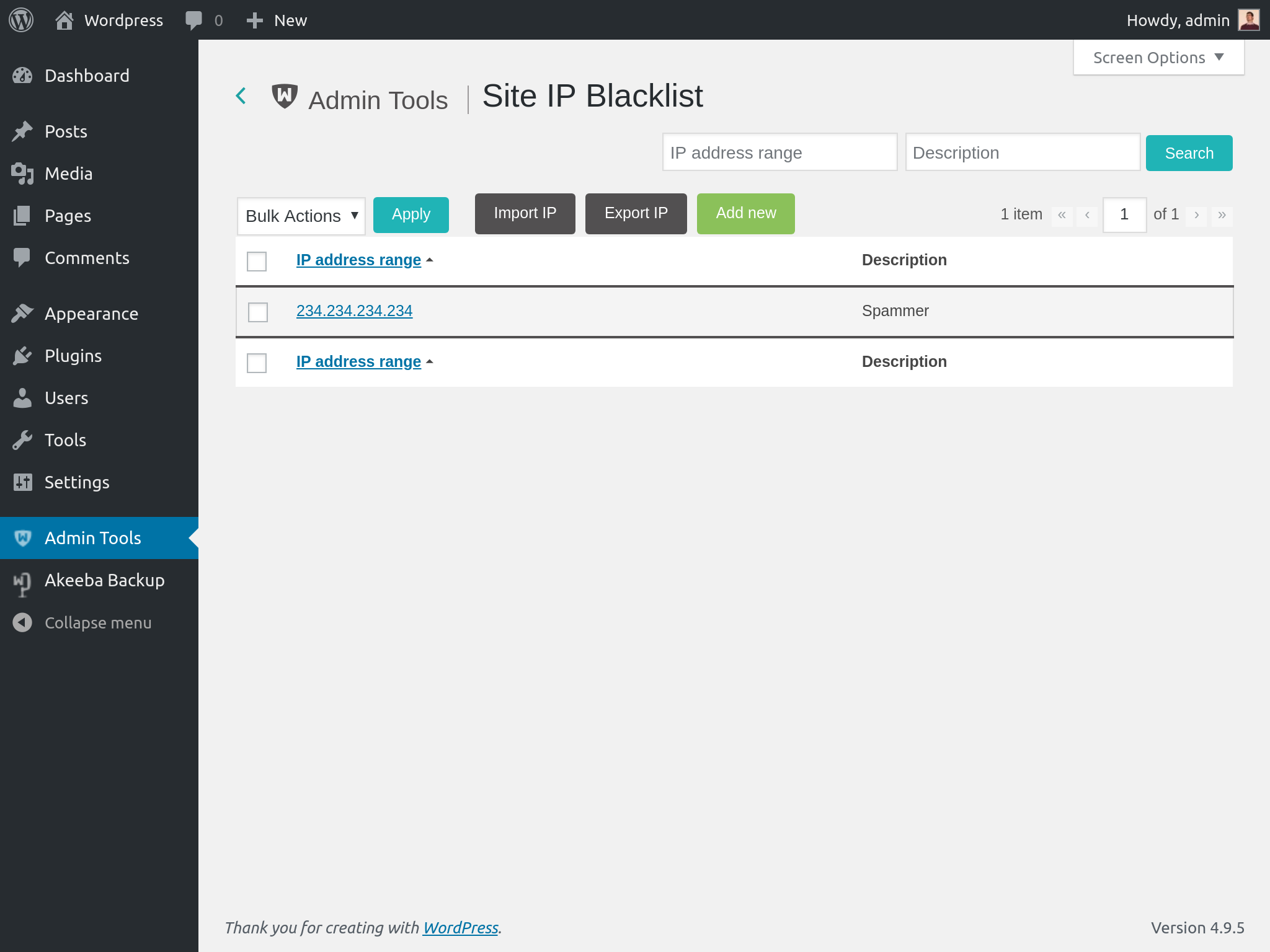
Rename the folder of the security plugin to disable it –Į.g.We will temporarily disable the plugin to at least log in to the site. Navigate to the plugins folder within the WordPress install. If you suspect you have a WordPress security plugin installed, you will need to use an FTP client to log in to the server. When trying to access the default WordPress login screen, users face a 404 error message.

There could be a WordPress security plugin changing the default WordPress URL. folder/login WordPress security plugins and a hidden WordPress login URL
#WORDPRESS ADMIN INSTALL#
When the install is within a folder, the default WordPress login URL may look like this: Knowing the folder structure helps figure out the WordPress admin login page. Use your FTP programme to discover if the WordPress install is contained within a folder. There is often a ‘file manager’ available within the control panel of the ISP (the hosting provider) this will do the job. An FTP client is a programme that allows us to move files from a computer to a server. If you’ve lost touch with the website developer or are the website developer, the next option is to use an FTP client to view the files on the server.įTP stands for File Transfer Protocol. If the default WordPress URL does not bring you to the WordPress login screen, contacting your web designer is the easiest way to find the correct URL. WordPress websites can be developed within a directory on the server therefore the URL could be something like:įor security reasons, a web developer could have changed the default WordPress admin URL, making it something more obscure. However, the standard login URL could have been changed by the website creator. The default WordPress login URL is appended with /login or /admin, e.g.: URL is an acronym for Universal Resource Locator, which (more or less) means website address. Technical people – scroll to the bottom of this post.
#WORDPRESS ADMIN PASSWORD#
It is entirely possible to change a password if you have access to the database, usually accessed via the hosting control panel.Īn administrator can be added by accessing the database directly.Īt this stage, if you’re not technical, I advise you to request help from a web developer with MySQL experience. If you no longer have access to the email address associated with your WordPress account, you won’t be able to reset the password. If you don’t receive the reset email even after checking ALL email accounts (personal ones, too), read on. Check your SPAM box for that ‘reset email’ – WordPress emails often end up in SPAM or DELETED mail. Go to the email and click the link to reset the password. To change it, you need access to the registered email address. WordPress will never send the existing password for security reasons – it can only be changed. If this step works, an email will be sent to the email address associated with the account. Once entered, click “Get new password”.On the next screen, enter either the imagined username or email address.You must have an idea of the username or associated email address for this to work. If you have lost the username or password (or both), navigate to the WordPress login URL, then click the “ Lost your password” link as per the image below. The password is chosen during the WordPress install or by the person that added you as a user. Changing the username helps prevent a website from being hacked. The default WordPress username is ‘admin‘, although an experienced web developer will create one that’s much harder to guess. If you came to the WordPress admin login screen, but the username and password didn’t work, read on for further help.Īnyone who came to a 404 error when bringing up the admin screen should skip to the next section – Default WordPress login URL. The login URL and the username might’ve been changed, so that simple set of instructions might not work.Ĭhanging the URL and the username is good practice and will keep the website more secure, so kudos to the person who set it up.

However, logging in to the WordPress admin area is not always this easy. Once logged in, you’ll arrive at the WordPress Dashboard.(Later, I recommend you change this for security reasons).



 0 kommentar(er)
0 kommentar(er)
